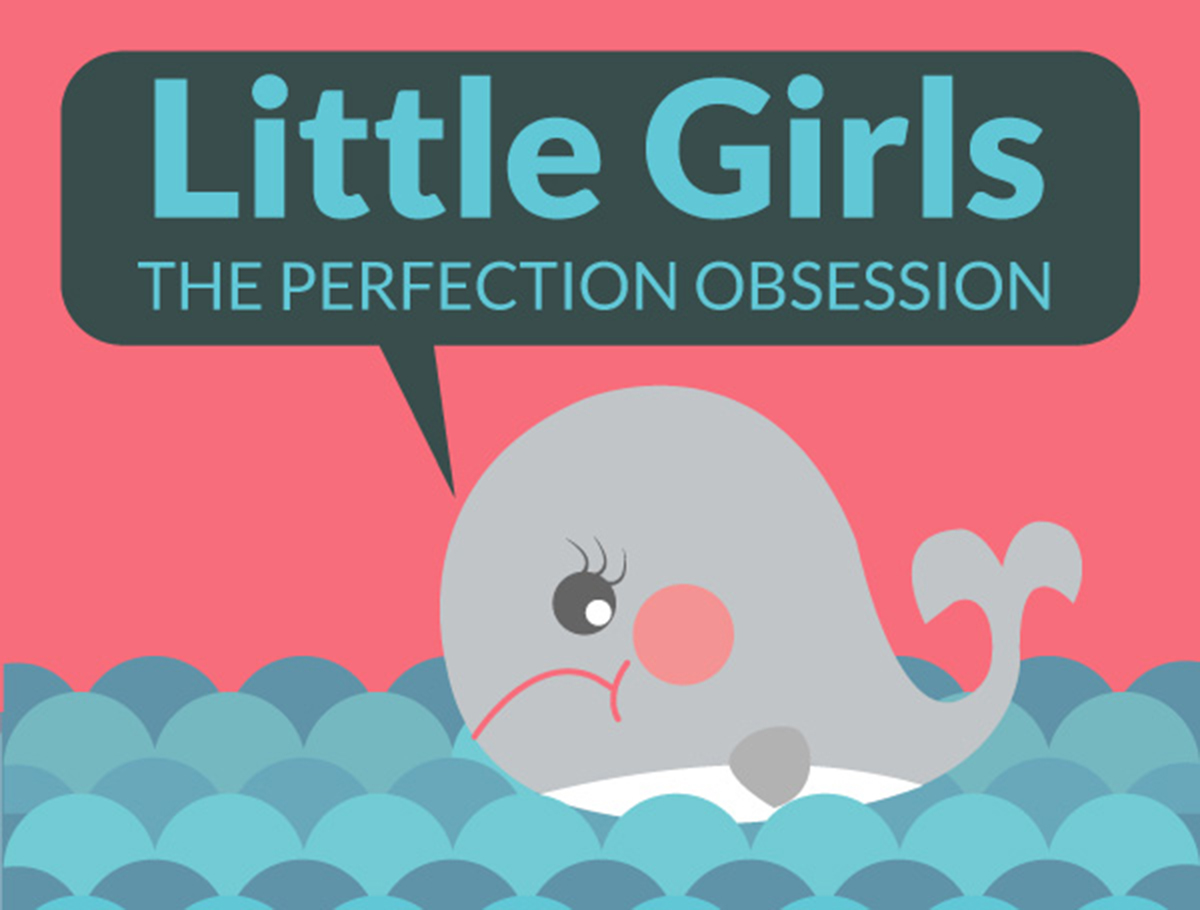Table of Contents
Why are Young Girls so Obsessed?
There are several reasons.
Our daughters are being more exposed to media than before, with the average child watching 40,000 adverts every single year. The narrow, and often airbrushed, images of beauty presented in the media press an unrealistic standard onto young and impressionable girls, who can't discriminate between reality and the airbrushed made-up fantasy placed before them.
Children's movies and TV can be just as bad. A study by the Journal of Children and Media found that of the girls, aged between ten and seventeen, who are featured on the popular children's channels Nickelodeon and Disney, 87% are underweight. The children who are heavier generally play unattractive, unpopular characters who are the butt of jokes.

We are also being exposed to more social pressure than ever before. Since the 1920s, when people started swallowing tapeworms and cigarettes were advertised with images of smiling flappers and the slogan "Reach for a Lucky instead of a sweet", being overweight has been increasingly seen as a disease. This has become even more prevalent over the last couple of decades. What may have previously been dismissed by fond relatives as "puppy fat" is noted on charts and at school weigh-ins. The child with a normal, tiny tummy is made to feel like a blue whale.
Schools can accidentally worsen the problem with their focus on healthy eating. Children may misunderstand messages about healthy eating and take them to extremes. After a classroom lesson on the dangers of obesity, one nine-year-old boy became obsessed about the fat content in his packed lunch. Another child began hiding his lunch in his bag, which his mother only discovered when the bag started to stink.
Finally, parents and other adults can accidentally reinforce dangerous a body perception. Every time a mother says, in front of her child, that she's fat, or refuses dessert because she's dieting, she reinforces the message into her daughter's head that that's a healthy, normal way to be.
READ Since When Did Eating Disorders Become A Trend?
Other adults can also teach children that thinness is normal and desirable. Hannah Betts, a writer for the Telegraph, (always a normal weight before) was very underweight after a prolonged illness, losing four stone. She began getting a lot of compliments, telling her how "good" she looked, and that she should "keep it up". She says of that time:
"My unpadded bottom hurt when I sat...Merely lying down was painful."
However, children don't feel this reality. They only hear the compliments, see the approving sweep of the eyes, and hear the muttered complaints from their mothers that they can't "shift that last pound". These distorted perceptions gradually seep into our children's consciousness, and become all they know.
What Do Young Girls Want?
"[Stop] judging girls on their bodies and making them feel bad about themselves."
Girl aged seven to ten, Girlguiding UK Study
54% of young girls (aged seven- to ten-years-old) would like people to stop judging girls based on their bodies and appearance.
- www.girlguiding.org.uk/what-we-do/our-stories-and-news/news/girls-as-young-as-seven-feel-pressure-to-look-perfect
- www.girlguiding.org.uk/link/ba8a7d3a93134acabf2dc4eaaf3763c0.aspx
- www.girlguiding.org.uk/social-action-advocacy-and-campaigns/research/girls-attitudes-survey/women-in-the-media-and-everyday-sexism
- kidshealth.org/en/parents/eating-disorders.html#
- www.ahaparenting.com/parenting-tools/safety/prevent-eating-disorder-child
- http://www.independent.co.uk/news/uk/home-news/girls-as-young-as-seven-being-forced-to-look-perfect-a7343681.html
- www.dailymail.co.uk/femail/article-3853312/What-today-s-7-year-old-girls-really-think-s-NOT-dolls-ponies-princesses.html
- www.dailymail.co.uk/femail/article-2178914/What-I-want-I-grow-SKINNY.html
- www.telegraph.co.uk/women/womens-health/10607040/Getting-thin-why-is-it-the-ultimate-female-ambition.html
- www.nextavenue.org/why-our-culture-is-obsessed-with-thinness
- Photo courtesy of
- Infographic by SteadyHealth.com
- Infographic by SteadyHealth.com


Your thoughts on this